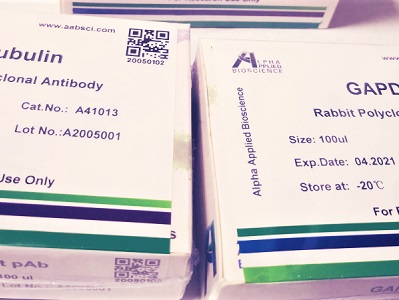

KIR5.1 (phospho Ser416) rabbit pAb
Cat :A16731
-
Source
Rabbit
-
Applications
WB,IHC,IF,ELISA
-
Reactivity
Human,Mouse,Rat
-
Dilution
WB: 1:500 - 1:2000. IHC: 1:100 - 1:300. IF: 1:200 - 1:1000. ELISA: 1:5000. Not yet tested in other applications.
-
Storage
-20°C/1 year
-
Specificity
Phospho-KIR5.1 (S416) Polyclonal Antibody detects endogenous levels of KIR5.1 protein only when phosphorylated at S416.
-
Source/Purification
The antibody was affinity-purified from rabbit antiserum by affinity-chromatography using epitope-specific immunogen.
-
Immunogen
The antiserum was produced against synthesized peptide derived from mouse Kir5.1 around the phosphorylation site of Ser417. AA range:369-418
-
Alternative names
KCNJ16; Inward rectifier potassium channel 16; Inward rectifier K(+) channel Kir5.1; Potassium channel; inwardly rectifying subfamily J member 16
-
Form
Liquid in PBS containing 50% glycerol, 0.5% BSA and 0.02% sodium azide.
-
Clonality
Polyclonal
-
Isotype
IgG
-
Background
KCNJ16 (Potassium Voltage-Gated Channel Subfamily J Member 16) is a Protein Coding gene. Diseases associated with KCNJ16 include sesame syndrome and body dysmorphic disorder. Among its related pathways are Transmission across Chemical Synapses and Inwardly rectifying K+ channels. GO annotations related to this gene include inward rectifier potassium channel activity. An important paralog of this gene is KCNJ3. nward rectifier potassium channels are characterized by a greater tendency to allow potassium to flow into the cell rather than out of it. Their voltage dependence is regulated by the concentration of extracellular potassium; as external potassium is raised, the voltage range of the channel opening shifts to more positive voltages. The inward rectification is mainly due to the blockage of outward current by internal magnesium. KCNJ16 may be involved in the regulation of fluid and pH balance. In the kidney, together with KCNJ10, mediates basolateral K(+) recycling in distal tubules; this process is critical for Na(+) reabsorption at the tubules (PubMed: 24561201). he inward-rectifier potassium channel family (also known as 2-TM channels) include the strong inward-rectifier channels (Kir2. ), the G-protein-activated inward-rectifier channels (Kir3. ) and the ATP-sensitive channels (Kir6. ), which combine with sulphonylurea receptors.
-
Other
KCNJ16, Inward rectifier potassium channel 16
-
Mol.Wt (Da)
47936
-
Concentration
1 mg/ml
| Product | Reactivity | Applications | Conjugation | Catalog | Images |
|---|
-
 400-836-3211
400-836-3211
-
 support@aabsci.com
support@aabsci.com
-
β-actin rabbit pAb ...... >
-
β-actin rabbit pAb(A284) ...... >
-
Plant-actin rabbit pAb ...... >
-
β-tubulin mouse mAb(M7) ...... >
-
GAPDH mouse mAb(2B8) ...... >
-
GAPDH mouse mAb(PT0325) ...... >
-
Histone H3 rabbit pAb ...... >
-
Histone H3 rabbit pAb ...... >
-
COX IV mouse mAb(6C8) ...... >
-
GFP-Tag mouse mAb(1G6) ...... >
-
HA-Tag mouse mAb(1B10) ...... >
-
mCherry-Tag mouse mAb(6B3) ...... >










 400-836-3211
400-836-3211
